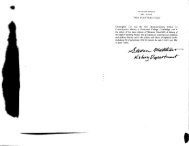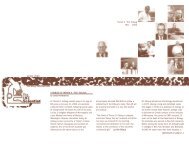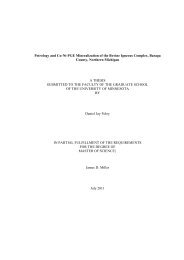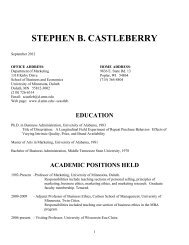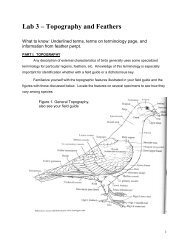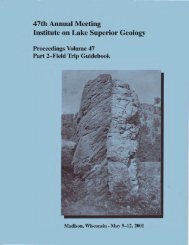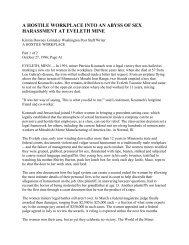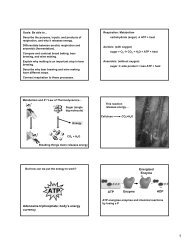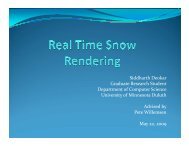Program, Abstracts, and Guidebooks - University of Minnesota Duluth
Program, Abstracts, and Guidebooks - University of Minnesota Duluth
Program, Abstracts, and Guidebooks - University of Minnesota Duluth
You also want an ePaper? Increase the reach of your titles
YUMPU automatically turns print PDFs into web optimized ePapers that Google loves.
-18-<br />
EARLY PRECAMBRIAN GEOLOGY OF THE SAGkNAGA-NO1HEBN<br />
LIGHT LAKES AREA, MINNESOTA-ONTARIO<br />
G. N. HANSON<br />
State <strong>University</strong> <strong>of</strong> New York at Stony Brook<br />
Stony Brook, N. Y. 11790<br />
5. 5. GOLDICH<br />
Northern Illinois <strong>University</strong><br />
DeKalb, Illinois 60115<br />
ABSTRACT<br />
The principal Early Precambrian rock units<br />
in the Saganaga—Northern<br />
Light Lakes area <strong>of</strong> Ontario <strong>and</strong> <strong>Minnesota</strong>, from oldest to youngest, include<br />
the Keewatin volcanic <strong>and</strong> related rocks, the Northern Light Gneiss, the<br />
Saganaga Tonalite, formerly called the Saganaga Granite, <strong>and</strong> the Knife<br />
Lake Group. These units were intruded by numerous small plutons <strong>and</strong> dikes.<br />
The Northern Light Gneiss, the Saganaga Tonalite, <strong>and</strong> syenodioritic<br />
to granodioritic phases <strong>of</strong> a small pluton at Icarus Lake, from oldest<br />
to youngest on the basis <strong>of</strong> field relationships, have been dated by the<br />
Rb-Sr, whole-rock technique.<br />
The isochron ages range from 2700 to<br />
2750 m.y. <strong>and</strong> are indistinguishable but suggest that all these rocks formed<br />
within a time span o' less than 100 m.y. <strong>and</strong> probably less than 50 m.y.<br />
Modal <strong>and</strong> chemical analyses show that the greater part <strong>of</strong> the Northern<br />
Light Gneiss is trondhjemitic. in composition. As suggested originally by<br />
Frank Grout the gneiss nay have resulted from the lit—par—lit injection<br />
<strong>of</strong> the Keewatin greenstones during a period <strong>of</strong> folding. The gneiss,<br />
however, may have been formed by folding <strong>and</strong> metamorphism <strong>of</strong> a Keewatin<br />
volcanic pile composed <strong>of</strong> basaltic, trondhjeniitic, <strong>and</strong> rhyolitic volcanic<br />
rocks, <strong>and</strong> possibly some sediments.<br />
The Saganaga Tonalite is a late or postkinematic intrusion emplaced<br />
in the greenstones <strong>and</strong> the Northern Light Gneiss, <strong>and</strong> inclusions <strong>of</strong> both<br />
rock types are found in the tonalite. The Icarus Lake pluton intrudes<br />
both the Northern Light Gneiss <strong>and</strong> the Saganaga Tonalite. It wnsists <strong>of</strong><br />
an older western phase <strong>of</strong> syenodiorite <strong>and</strong> a younger eastern phase <strong>of</strong><br />
granodiorite. Both rocks are alkalic, containing aegerine-augite <strong>and</strong><br />
hastingsite.<br />
Rb—Sr <strong>and</strong> K-Ar mineral ages from the principal rock units range from<br />
2500 to 2700 n.y. <strong>and</strong> are difficult to interpret. In part these ages<br />
may be related to faulting <strong>and</strong> alteration. Movements on the major fault<br />
zones ceased before the deposition <strong>of</strong> the Anini.ikie sediments. Metamorphism<br />
is low-grade, greenschist facies <strong>of</strong> the Abukuma type.




